Inpage Navigation Section: Overview
Reinvigorated to further embody Ninja sportbike lineage, the Ninja 650 motorcycle comes packed with a sporty 649cc engine, next-level technology advancements and sharp styling updates. Unmistakable sport performance is met with an upright riding position for exciting daily commutes, while a supreme level of attitude reminds you of its legendary heritage.
Colours
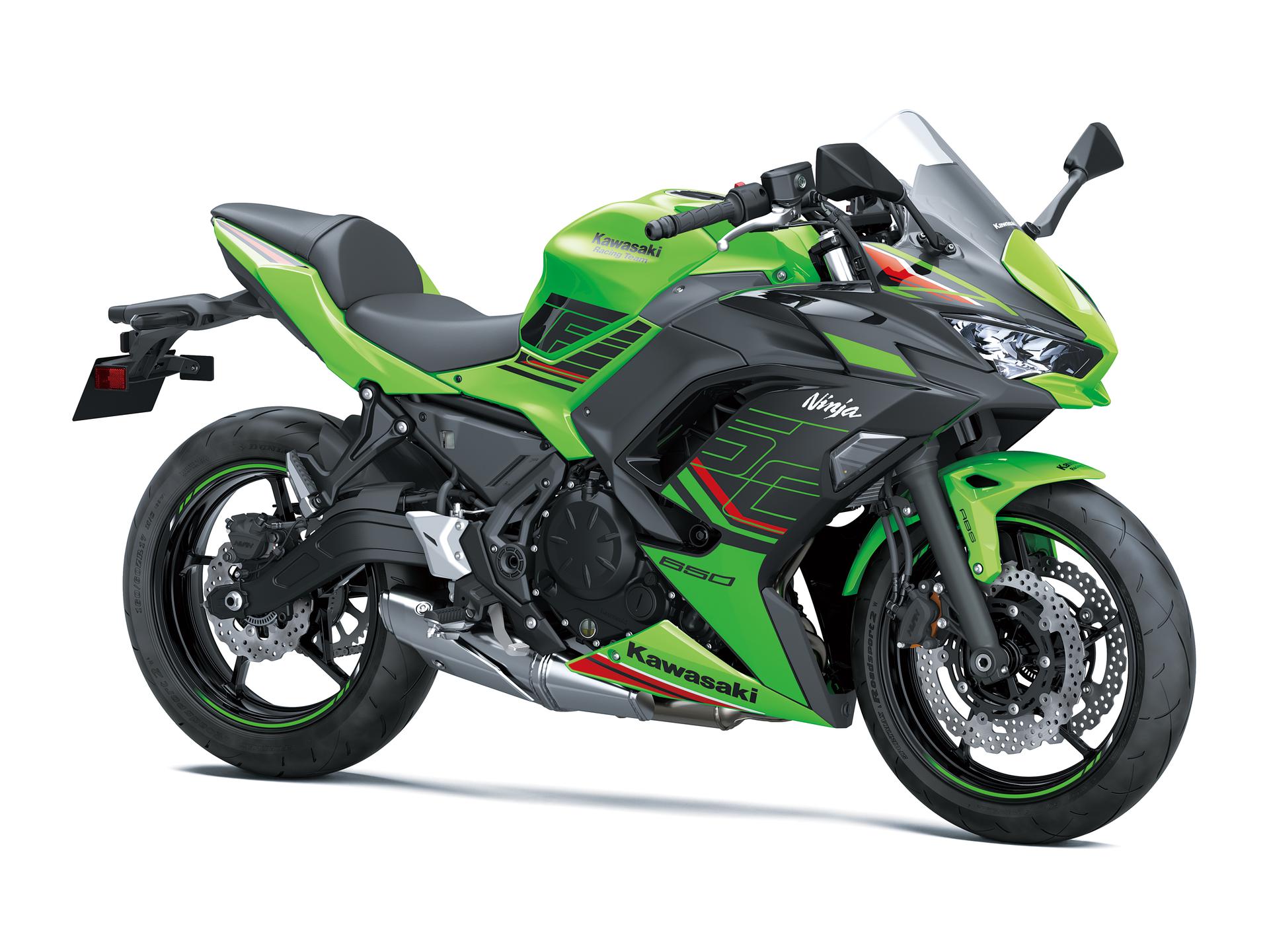
Show all
Show less
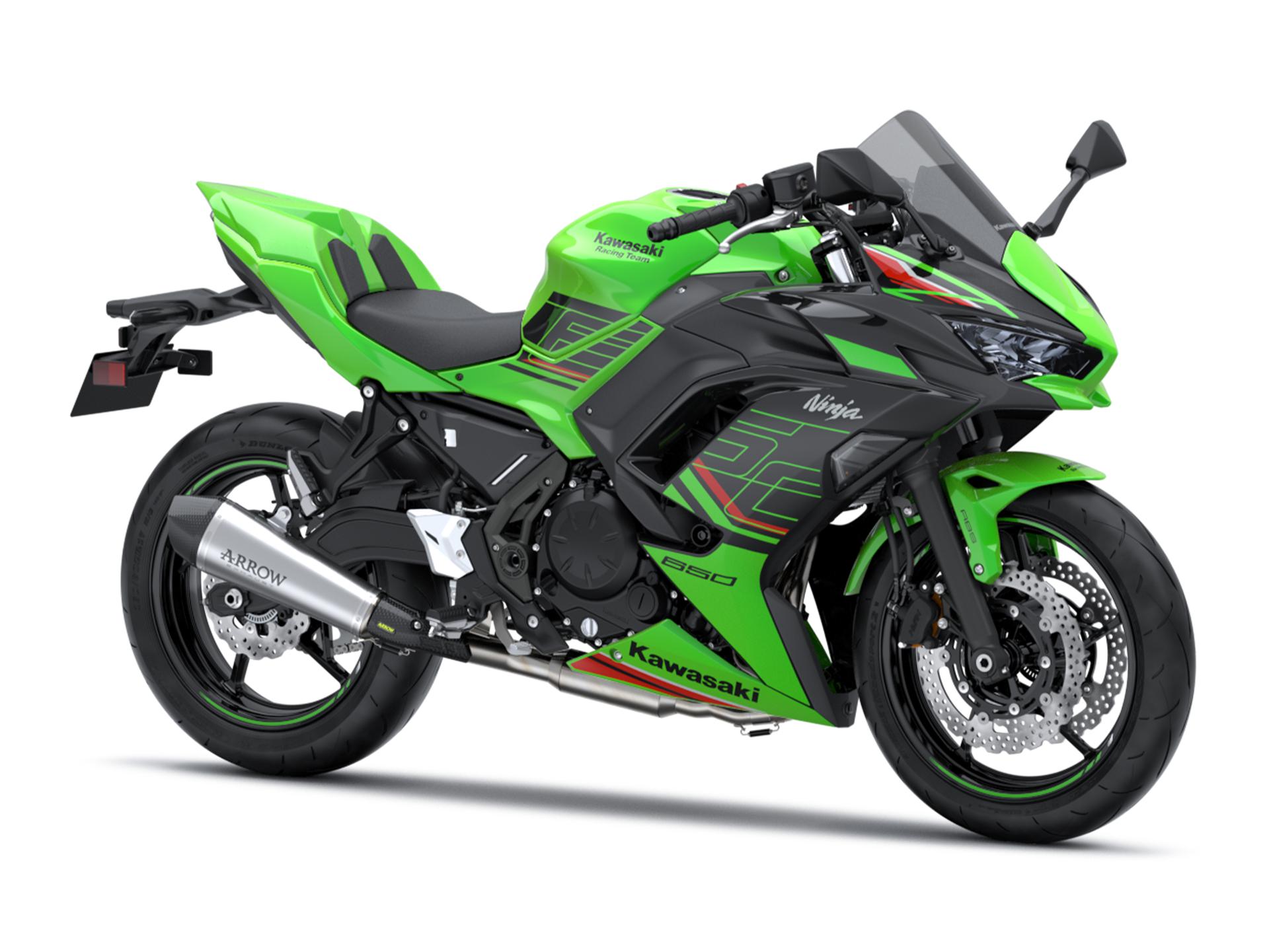
Edition Accessories
Show all
Show less
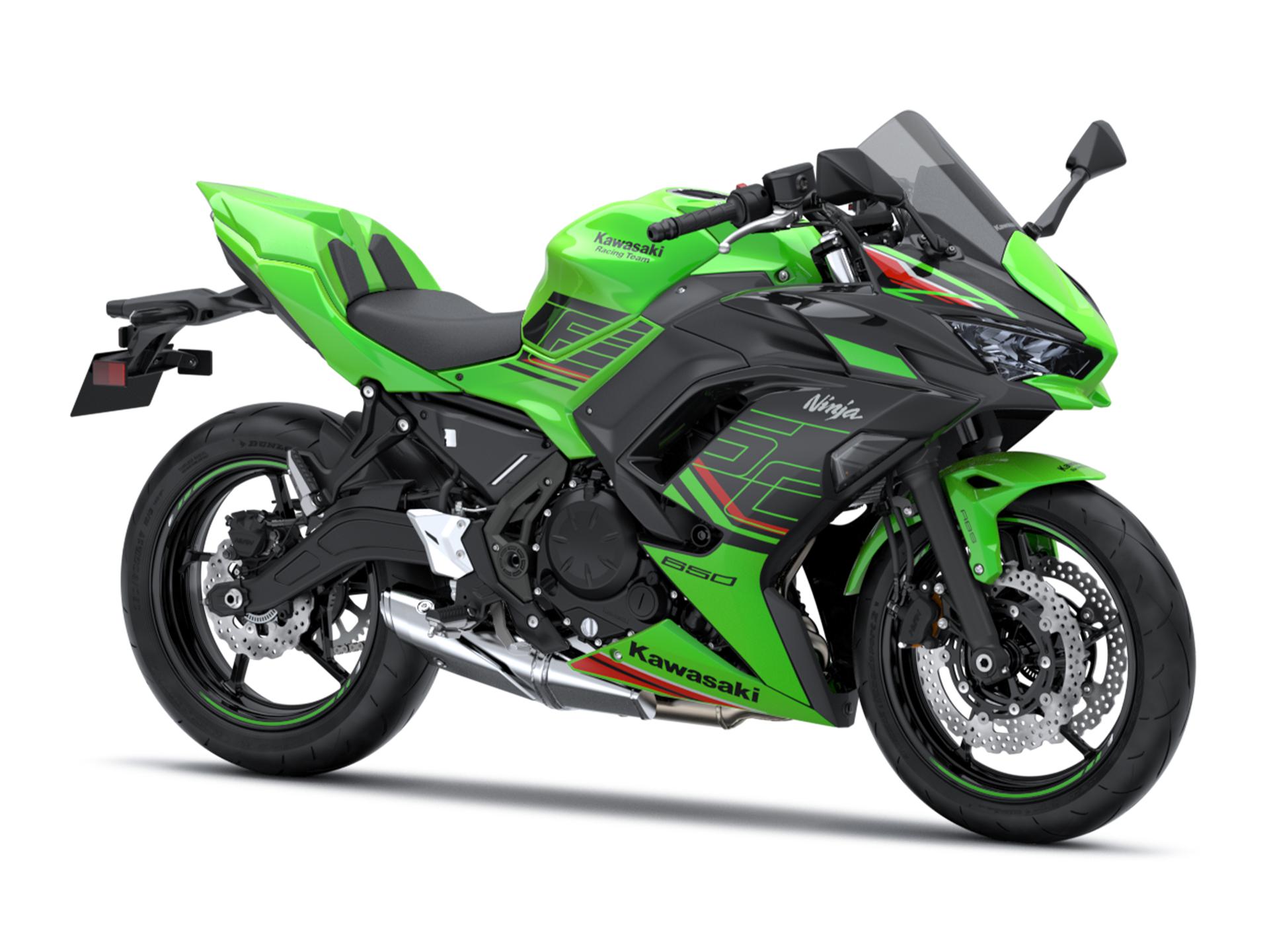
Edition Accessories
Show all
Show less
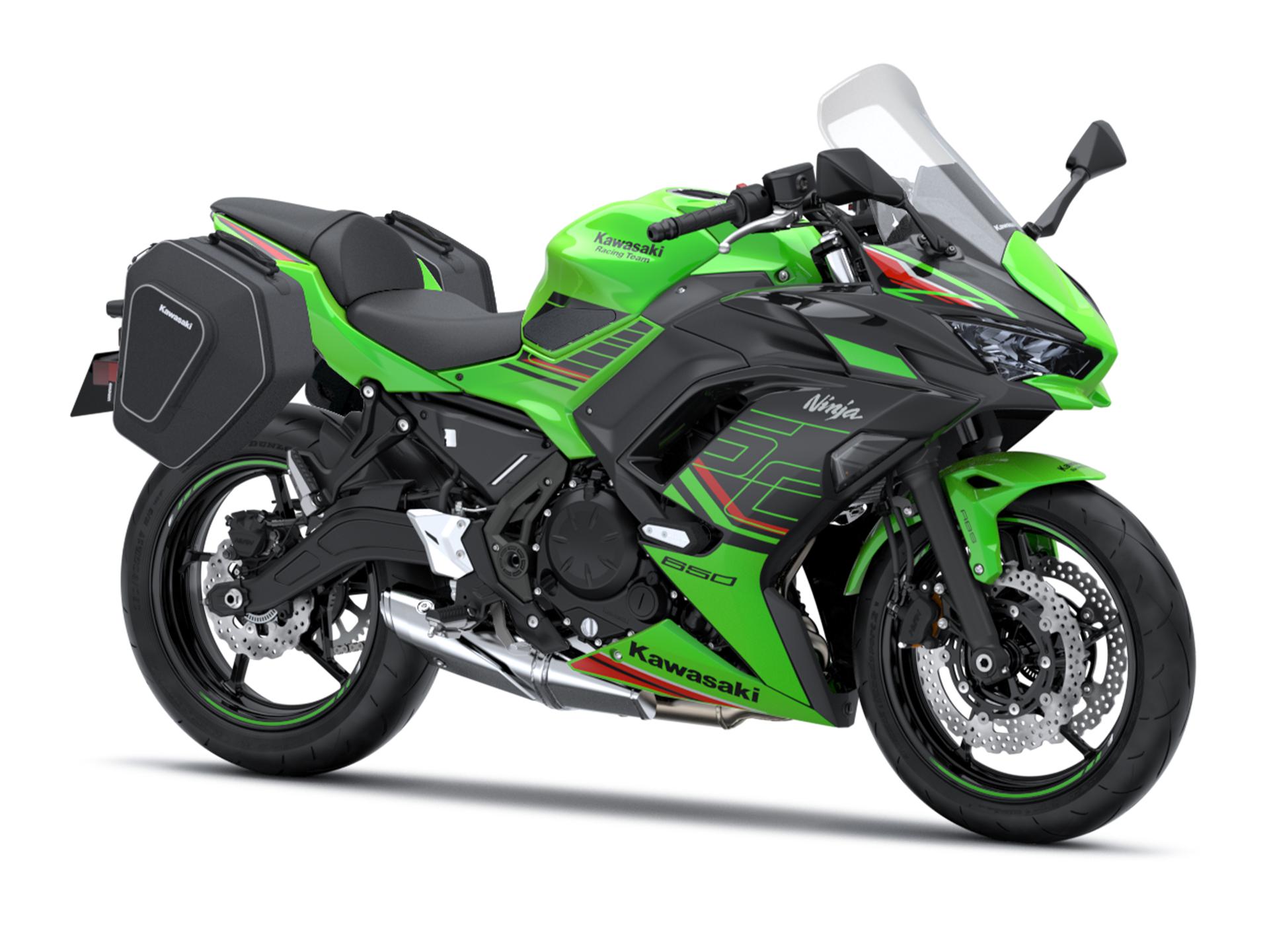
Edition Accessories
Show all
Show less
Inpage Navigation Section: Gallery





Inpage Navigation Section: Features & Specs
Kawasaki's advanced traction control system provides both enhanced sport riding performance and the peace of mind under certain conditions to negotiate low-traction surfaces with confidence. Two modes allow riders to adjust settings to suit the riding situation and rider preference. Riders may also elect to turn the system OFF. For 35 kW kit models, KTRC offers one mode (plus OFF).

Kawasaki's advanced traction control system provides both enhanced sport riding performance and the peace of mind under certain conditions to negotiate low-traction surfaces with confidence. Two modes allow riders to adjust settings to suit the riding situation and rider preference. Riders may also elect to turn the system OFF. For 35 kW kit models, KTRC offers one mode (plus OFF).
A Bluetooth chip built into the instrument panel enables riders to connect to their motorcycle wirelessly. Using the smartphone application “RIDEOLOGY THE APP,” a number of instrument functions can be accessed, contributing to an enhanced motorcycling experience.

A Bluetooth chip built into the instrument panel enables riders to connect to their motorcycle wirelessly. Using the smartphone application “RIDEOLOGY THE APP,” a number of instrument functions can be accessed, contributing to an enhanced motorcycling experience.
Twin LED headlights, each featuring low and high beam as well as a position lamp, offer increased brightness.

Twin LED headlights, each featuring low and high beam as well as a position lamp, offer increased brightness.
The Ninja 650’s sharper new styling gives it a sportier appearance and even stronger Ninja family looks. Its sleek and sporty design inspires confidence in riders.

The Ninja 650’s sharper new styling gives it a sportier appearance and even stronger Ninja family looks. Its sleek and sporty design inspires confidence in riders.
New Dunlop Sportmax Roadsport 2 tyres contribute to lighter handling.

New Dunlop Sportmax Roadsport 2 tyres contribute to lighter handling.
The all new digital TFT colour instrumentation – a Kawasaki first in the 650cc class – gives the cockpit a high-tech, highgrade appearance. The new meter also offers additional features unavailable on the previous model.

The all new digital TFT colour instrumentation – a Kawasaki first in the 650cc class – gives the cockpit a high-tech, highgrade appearance. The new meter also offers additional features unavailable on the previous model.
Prioritising a sportier appearance, the redesigned windshield is now lower and flush-fit with the upper cowl. It is set at a more upright angle to offer the rider decent wind protection.

Prioritising a sportier appearance, the redesigned windshield is now lower and flush-fit with the upper cowl. It is set at a more upright angle to offer the rider decent wind protection.
Rear seat with 4 thicker urethane (approximately 5 mm thicker at the centre, 10 mm thicker at the sides) and sides that extend more widely offers increased passenger comfort.

Rear seat with 4 thicker urethane (approximately 5 mm thicker at the centre, 10 mm thicker at the sides) and sides that extend more widely offers increased passenger comfort.
Kawasaki's advanced traction control system provides both enhanced sport riding performance and the peace of mind under certain conditions to negotiate low-traction surfaces with confidence. Two modes allow riders to adjust settings to suit the riding situation and rider preference. Riders may also elect to turn the system OFF. For 35 kW kit models, KTRC offers one mode (plus OFF).

Kawasaki's advanced traction control system provides both enhanced sport riding performance and the peace of mind under certain conditions to negotiate low-traction surfaces with confidence. Two modes allow riders to adjust settings to suit the riding situation and rider preference. Riders may also elect to turn the system OFF. For 35 kW kit models, KTRC offers one mode (plus OFF).
A Bluetooth chip built into the instrument panel enables riders to connect to their motorcycle wirelessly. Using the smartphone application “RIDEOLOGY THE APP,” a number of instrument functions can be accessed, contributing to an enhanced motorcycling experience.

A Bluetooth chip built into the instrument panel enables riders to connect to their motorcycle wirelessly. Using the smartphone application “RIDEOLOGY THE APP,” a number of instrument functions can be accessed, contributing to an enhanced motorcycling experience.
Twin LED headlights, each featuring low and high beam as well as a position lamp, offer increased brightness.

Twin LED headlights, each featuring low and high beam as well as a position lamp, offer increased brightness.
The Ninja 650’s sharper new styling gives it a sportier appearance and even stronger Ninja family looks. Its sleek and sporty design inspires confidence in riders.

The Ninja 650’s sharper new styling gives it a sportier appearance and even stronger Ninja family looks. Its sleek and sporty design inspires confidence in riders.
New Dunlop Sportmax Roadsport 2 tyres contribute to lighter handling.

New Dunlop Sportmax Roadsport 2 tyres contribute to lighter handling.
The all new digital TFT colour instrumentation – a Kawasaki first in the 650cc class – gives the cockpit a high-tech, highgrade appearance. The new meter also offers additional features unavailable on the previous model.

The all new digital TFT colour instrumentation – a Kawasaki first in the 650cc class – gives the cockpit a high-tech, highgrade appearance. The new meter also offers additional features unavailable on the previous model.
Prioritising a sportier appearance, the redesigned windshield is now lower and flush-fit with the upper cowl. It is set at a more upright angle to offer the rider decent wind protection.

Prioritising a sportier appearance, the redesigned windshield is now lower and flush-fit with the upper cowl. It is set at a more upright angle to offer the rider decent wind protection.
Rear seat with 4 thicker urethane (approximately 5 mm thicker at the centre, 10 mm thicker at the sides) and sides that extend more widely offers increased passenger comfort.

Rear seat with 4 thicker urethane (approximately 5 mm thicker at the centre, 10 mm thicker at the sides) and sides that extend more widely offers increased passenger comfort.
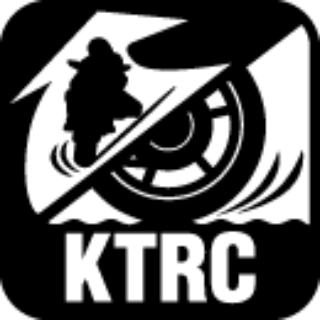
Kawasaki's advanced traction control system provides both enhanced sport riding performance and the peace of mind under certain conditions to negotiate low-traction surfaces with confidence. Two modes allow riders to adjust settings to suit the riding situation and rider preference. Riders may also elect to turn the system OFF. For 35 kW kit models, KTRC offers one mode (plus OFF).
Smartphone connectivity contributes to an enhanced motorcycling experience by enabling riders to connect to their motorcycle wirelessly.

Clever technology enables riders to connect to their motorcycle wirelessly. Using the smartphone application RIDEOLOGY THE APP a number of instrument functions can be accessed, contributing to an enhanced motorcycling experience. Vehicle information (such as the odometer, fuel gauge, maintenance schedule, etc) can be viewed on the smartphone. Riding logs (varies by model, but may include GPS route, gear position, rpm, and other information) can be viewed on the smartphone. When connected, telephone (call, mail) notices are displayed on the instrument panel. Riders can also make changes to their motorcycle instrument display settings (preferred units, clock and date setting, etc) via the smartphone. And on certain models, it is even possible to check and adjust vehicle settings (such as Rider Mode, electronic rider support features, and payload settings) using the smartphone.
Based on racing technology, the Assist & Slipper Clutch acts as both a back-torque limiter and a self-servo mechanism that enables a lighter clutch lever pull.

Based on feedback from racing activities, the Assist & Slipper Clutch uses two types of cams (an assist cam and a slipper cam) to either drive the clutch hub and operating plate together or apart. Under normal operation, the assist cam functions as a self-servo mechanism, pulling the clutch hub and operating plate together to compress the clutch plates. This allows the total clutch spring load to be reduced, resulting in a lighter clutch lever feel when operating the clutch. When excessive engine braking occurs as a result of quick downshifts (or an accidental downshift) the slipper cam comes into play, forcing the clutch hub and operating plate apart. This relieves pressure on the clutch plates to reduce back-torque and helps prevent the rear tyre from hopping and skidding. This race-style function is particularly useful when sport or track riding.
Dual Throttle Valves offer increased power and greater ease of use care of a second set of ECU-controlled throttle valves.

Late-model sport bikes often use large-bore throttle bodies to generate high levels of power. However, with large diameter throttles, when a rider suddenly opens the throttle, the unrestricted torque response can be strong. Dual throttle valve technology was designed to tame engine response while contributing to performance.
On models with dual throttle valves, there are two throttle valves per cylinder: in addition to the main valves, which are physically linked to the throttle grip and controlled by the rider, a second set of valves, opened and closed by the ECU, precisely regulates intake airflow to ensure a natural, linear response. With the air passing through the throttle bodies becoming smoother, combustion efficiency in improved and power is increased.
Horizontal Back-link Rear Suspension arranges its shock unit horizontally, greatly contributing to efficient use of space and mass centralisation.

Compared to Kawasaki's traditional Uni-Trak rear suspension, which mounts the shock unit vertically, with Horizontal Back-link rear suspension, the shock unit is almost horizontal. Kawasaki's original suspension arrangement locates the shock unit very close to the bike's centre of gravity, greatly contributing to mass centralisation. And because there is no linkage or shock unit protruding beneath the swingarm, this frees up space for a larger exhaust pre-chamber (an exhaust expansion chamber situated just upstream of the silencer). With a larger pre-chamber, silencer volume can be reduced, and heavy exhaust components can be concentrated closer to the centre of the bike, further contributing to mass centralisation. The result is greatly improved handling. Another benefit is that the shock unit is placed far away from exhaust heat. Because it is more difficult for heat from the exhaust system to adversely affect suspension oil and gas pressure, suspension performance is more stable. Horizontal Back-link rear suspension offers numerous secondary benefits like this.
The Economical Riding Indicator is a mark appearing on the instrument panel to indicate favourable fuel consumption, encouraging fuel efficient riding.

Using high-precision electronic control for engine management, Kawasaki models can achieve a high level of fuel efficiency. However, fuel consumption is greatly affected by throttle use, gear selection, and other elements under the rider's control. The Economical Riding Indicator is a function that indicates when current riding conditions are consuming a low amount of fuel. The system continuously monitors fuel consumption, regardless of vehicle speed, engine speed, throttle position and other riding conditions. When fuel consumption is low for a given speed (i.e. fuel efficiency is high), an "ECO" mark appears on the instrument panel's LCD screen. By riding so that the "ECO" mark remains on, fuel consumption can be reduced. While effective vehicle speed and engine speed may vary by model, paying attention to conditions that cause the "ECO" mark to appear can help riders improve their fuel efficiency – a handy way to increase cruising range. Further, keeping fuel consumption low also helps minimise negative impact on the environment.
ABS (Anti-lock Brake System) ensures stable braking performance by preventing wheel lock during braking.

Sudden over-application of the brakes, or braking on low-grip surfaces (surfaces with a low coefficient of friction) such as wet asphalt or manhole covers may cause a motorcycle's wheel(s) to lock up and slip. ABS was developed to prevent such incidents. Kawasaki ABS systems are controlled by high precision and highly reliable programming formulated based on thorough testing of numerous riding situations. By ensuring stable braking performance, they offer rider reassurance that contributes to greater riding enjoyment. And to meet the special requirements of certain riders, specialised ABS systems are also available. For example, KIBS (Kawasaki Intelligent anti-lock Brake System) is a high-precision brake system designed specifically for supersport models, enabling sport riding to be enjoyed by a wider range of riders. And by linking the front and rear brakes, K-ACT (Kawasaki Advanced Coactive-braking Technology) ABS provides the confidence to enjoy touring on heavyweight models. Kawasaki is continually working on the development of other advanced ABS systems.

Kawasaki's advanced traction control system provides both enhanced sport riding performance and the peace of mind under certain conditions to negotiate low-traction surfaces with confidence. Two modes allow riders to adjust settings to suit the riding situation and rider preference. Riders may also elect to turn the system OFF. For 35 kW kit models, KTRC offers one mode (plus OFF).
Smartphone connectivity contributes to an enhanced motorcycling experience by enabling riders to connect to their motorcycle wirelessly.

Clever technology enables riders to connect to their motorcycle wirelessly. Using the smartphone application RIDEOLOGY THE APP a number of instrument functions can be accessed, contributing to an enhanced motorcycling experience. Vehicle information (such as the odometer, fuel gauge, maintenance schedule, etc) can be viewed on the smartphone. Riding logs (varies by model, but may include GPS route, gear position, rpm, and other information) can be viewed on the smartphone. When connected, telephone (call, mail) notices are displayed on the instrument panel. Riders can also make changes to their motorcycle instrument display settings (preferred units, clock and date setting, etc) via the smartphone. And on certain models, it is even possible to check and adjust vehicle settings (such as Rider Mode, electronic rider support features, and payload settings) using the smartphone.
Based on racing technology, the Assist & Slipper Clutch acts as both a back-torque limiter and a self-servo mechanism that enables a lighter clutch lever pull.

Based on feedback from racing activities, the Assist & Slipper Clutch uses two types of cams (an assist cam and a slipper cam) to either drive the clutch hub and operating plate together or apart. Under normal operation, the assist cam functions as a self-servo mechanism, pulling the clutch hub and operating plate together to compress the clutch plates. This allows the total clutch spring load to be reduced, resulting in a lighter clutch lever feel when operating the clutch. When excessive engine braking occurs as a result of quick downshifts (or an accidental downshift) the slipper cam comes into play, forcing the clutch hub and operating plate apart. This relieves pressure on the clutch plates to reduce back-torque and helps prevent the rear tyre from hopping and skidding. This race-style function is particularly useful when sport or track riding.
Dual Throttle Valves offer increased power and greater ease of use care of a second set of ECU-controlled throttle valves.

Late-model sport bikes often use large-bore throttle bodies to generate high levels of power. However, with large diameter throttles, when a rider suddenly opens the throttle, the unrestricted torque response can be strong. Dual throttle valve technology was designed to tame engine response while contributing to performance.
On models with dual throttle valves, there are two throttle valves per cylinder: in addition to the main valves, which are physically linked to the throttle grip and controlled by the rider, a second set of valves, opened and closed by the ECU, precisely regulates intake airflow to ensure a natural, linear response. With the air passing through the throttle bodies becoming smoother, combustion efficiency in improved and power is increased.
Horizontal Back-link Rear Suspension arranges its shock unit horizontally, greatly contributing to efficient use of space and mass centralisation.

Compared to Kawasaki's traditional Uni-Trak rear suspension, which mounts the shock unit vertically, with Horizontal Back-link rear suspension, the shock unit is almost horizontal. Kawasaki's original suspension arrangement locates the shock unit very close to the bike's centre of gravity, greatly contributing to mass centralisation. And because there is no linkage or shock unit protruding beneath the swingarm, this frees up space for a larger exhaust pre-chamber (an exhaust expansion chamber situated just upstream of the silencer). With a larger pre-chamber, silencer volume can be reduced, and heavy exhaust components can be concentrated closer to the centre of the bike, further contributing to mass centralisation. The result is greatly improved handling. Another benefit is that the shock unit is placed far away from exhaust heat. Because it is more difficult for heat from the exhaust system to adversely affect suspension oil and gas pressure, suspension performance is more stable. Horizontal Back-link rear suspension offers numerous secondary benefits like this.
The Economical Riding Indicator is a mark appearing on the instrument panel to indicate favourable fuel consumption, encouraging fuel efficient riding.

Using high-precision electronic control for engine management, Kawasaki models can achieve a high level of fuel efficiency. However, fuel consumption is greatly affected by throttle use, gear selection, and other elements under the rider's control. The Economical Riding Indicator is a function that indicates when current riding conditions are consuming a low amount of fuel. The system continuously monitors fuel consumption, regardless of vehicle speed, engine speed, throttle position and other riding conditions. When fuel consumption is low for a given speed (i.e. fuel efficiency is high), an "ECO" mark appears on the instrument panel's LCD screen. By riding so that the "ECO" mark remains on, fuel consumption can be reduced. While effective vehicle speed and engine speed may vary by model, paying attention to conditions that cause the "ECO" mark to appear can help riders improve their fuel efficiency – a handy way to increase cruising range. Further, keeping fuel consumption low also helps minimise negative impact on the environment.
ABS (Anti-lock Brake System) ensures stable braking performance by preventing wheel lock during braking.

Sudden over-application of the brakes, or braking on low-grip surfaces (surfaces with a low coefficient of friction) such as wet asphalt or manhole covers may cause a motorcycle's wheel(s) to lock up and slip. ABS was developed to prevent such incidents. Kawasaki ABS systems are controlled by high precision and highly reliable programming formulated based on thorough testing of numerous riding situations. By ensuring stable braking performance, they offer rider reassurance that contributes to greater riding enjoyment. And to meet the special requirements of certain riders, specialised ABS systems are also available. For example, KIBS (Kawasaki Intelligent anti-lock Brake System) is a high-precision brake system designed specifically for supersport models, enabling sport riding to be enjoyed by a wider range of riders. And by linking the front and rear brakes, K-ACT (Kawasaki Advanced Coactive-braking Technology) ABS provides the confidence to enjoy touring on heavyweight models. Kawasaki is continually working on the development of other advanced ABS systems.
| Engine type | Liquid-cooled, 4-stroke, parallel twin |
|---|---|
| Compression ratio | 10.8:1 |
| Valve system | DOHC, 8 valves |
| Bore x stroke | 83.0 x 60.0 mm |
| Displacement | 649 cm³ |
| Fuel system | Fuel injection with dual throttles: 36 mm x 2 |
| Lubrication | Forced lubrication, semi‑dry sump |
| Starting system | Electric |
| Ignition system | Digital |
| Maximum power | 50.2 kW {68 PS} / 8,000 rpm |
|---|---|
| Maximum torque | 64.0 N•m {6.5 kgf•m} / 6,700 rpm |
| CO2 emission | 107 g/km |
| Fuel consumption | 4.4 l/100km |
| CO2 emission 35 kW kit | 107.0 g/km |
| Fuel consumption 35 kW kit | 4.5 l/100km |
| Transmission | 6-speed, return shift |
| Clutch | Wet, multi disc |
| Primary reduction ratio | 2.095 (88/42) |
| Gear ratios 1st | 2.438 (39/16) |
| Gear ratios 2nd | 1.714 (36/21) |
| Gear ratios 3rd | 1.333 (32/24) |
| Gear ratios 4th | 1.111 (30/27) |
| Gear ratios 5th | 0.966 (28/29) |
| Gear ratios 6th | 0.852 (23/27) |
| Final drive | Sealed chain |
| Final reduction ratio | 3.067 (46/15) |
| Frame type | Trellis, high-tensile steel |
|---|---|
| Trail | 100 mm |
| Wheel travel front | 125 mm |
| Wheel travel rear | 130 mm |
| Tyre, front | 120/70 ZR17 M/C (58W) |
| Tyre, rear | 160/60 ZR17 M/C (69W) |
| L x W x H | 2,055 x 740 x 1,145 mm |
| Steering angle L/R | 32° / 32° |
| Wheel base | 1,410 mm |
| Ground clearance | 130 mm |
| Fuel capacity | 15.0 litres |
| Seat height | 790 mm |
| Curb mass* | 193 kg |
| | *Curb mass includes all necessary materials and fluids to operate correctly, full tank of fuel (more than 90 percent capacity) and tool kit (if supplied). |
| Estimated dry weight** | 178 kg |
| | **Estimated Dry weight does not include all necessary materials and fluids to operate correctly, full tank of fuel (more than 90 percent capacity) and tool kit (if supplied). |
| Front brake type | Dual semi-floating petal discs |
|---|---|
| Front brake diameter | Ø 300 mm |
| Front brake caliper type | Dual-piston |
| Rear brake type | Single petal disc |
| Rear brake diameter | Ø 220 mm |
| Rear brake caliper type | Single-piston |
| Front suspension type | Telescopic fork |
| Front suspension diameter | Ø 41 mm |
| Rear suspension type | Horizontal Back-link with spring preload adjustability |
Inpage Navigation Section: Accessories
